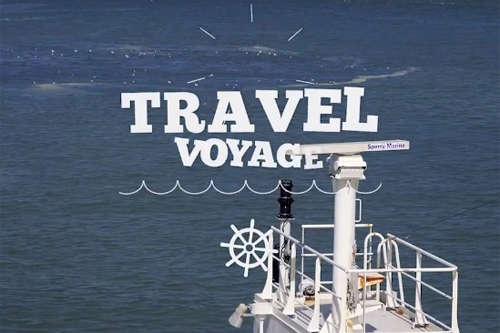Calais Port 2015
Building today the cross-channel port of tomorrow
Calais Port 2015 is the first maritime project under the European Union priority infrastructure plan.
This project will be able to double the port's current capacity by the construction of a new dock leading to the sea. Designed to anticipate and adapt to forecast traffic growth, this new infrastructure also prepares the Port of Calais for the logistic and industrial needs of tomorrow. Calais Port 2015 is entered in service on Octobre 31,2021.
Here is the introduction to the Calais Port 2015 project:
Calais Port 2015 seen from the sky through the years:
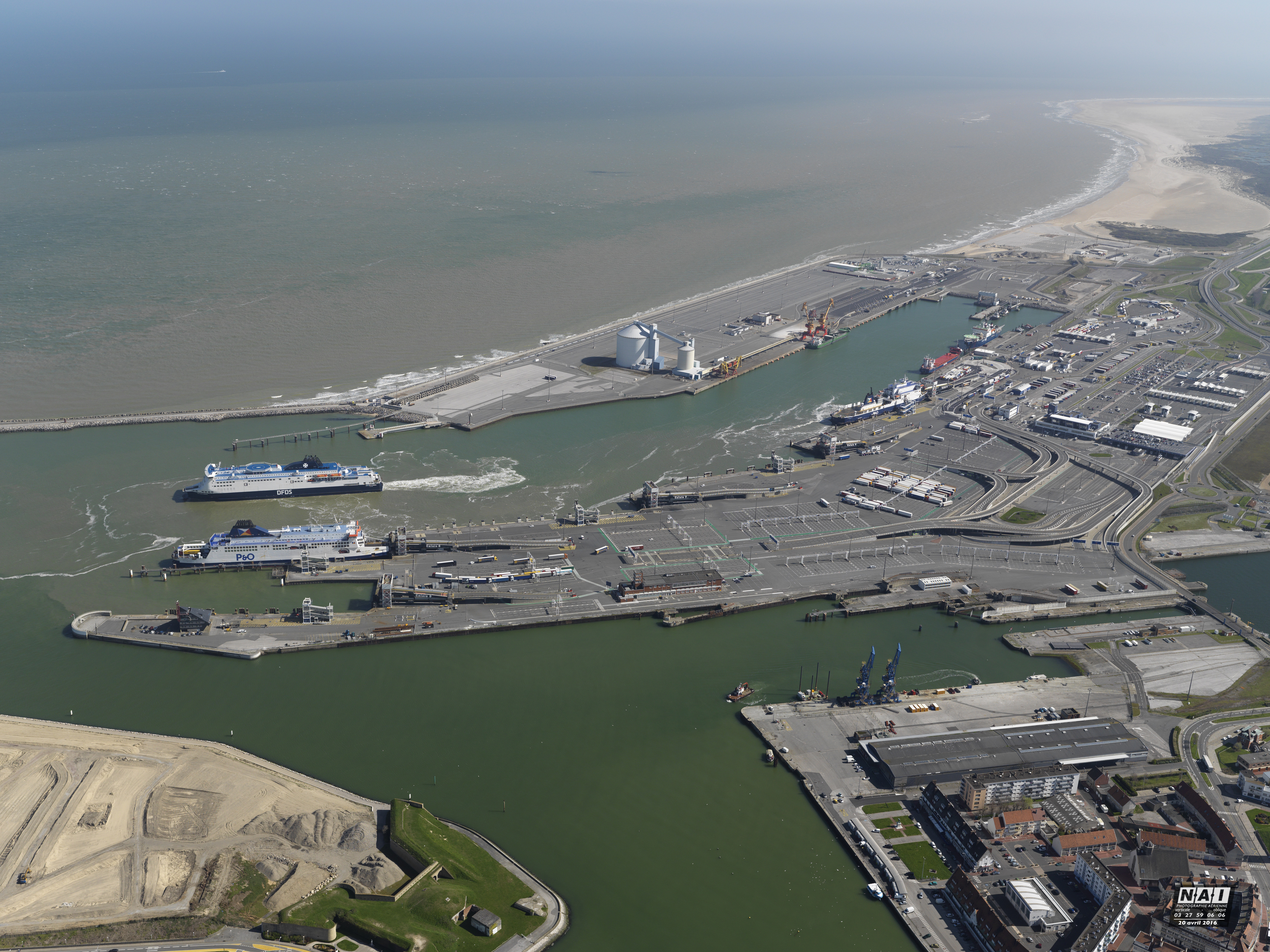
2016
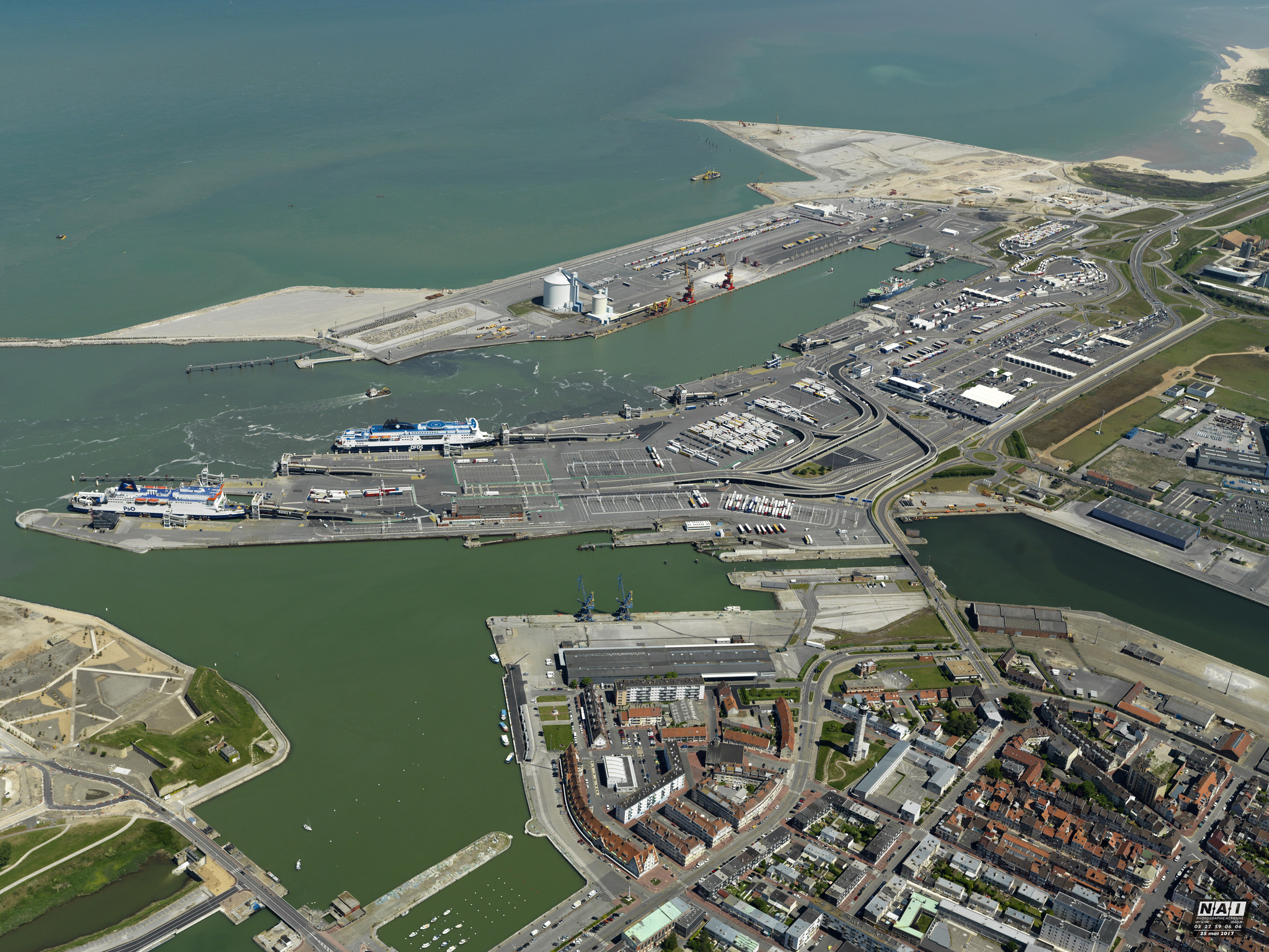
2017
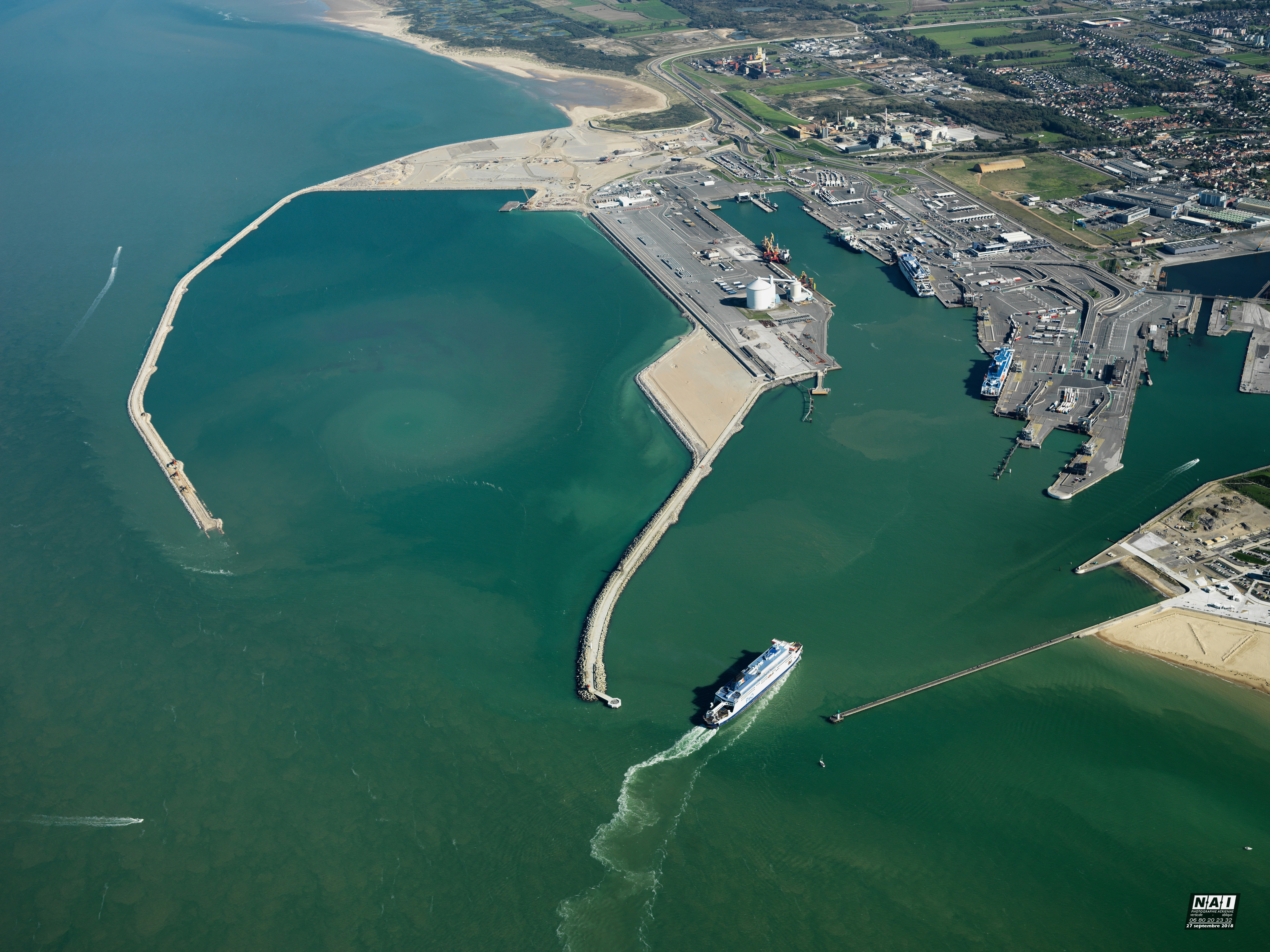
2018
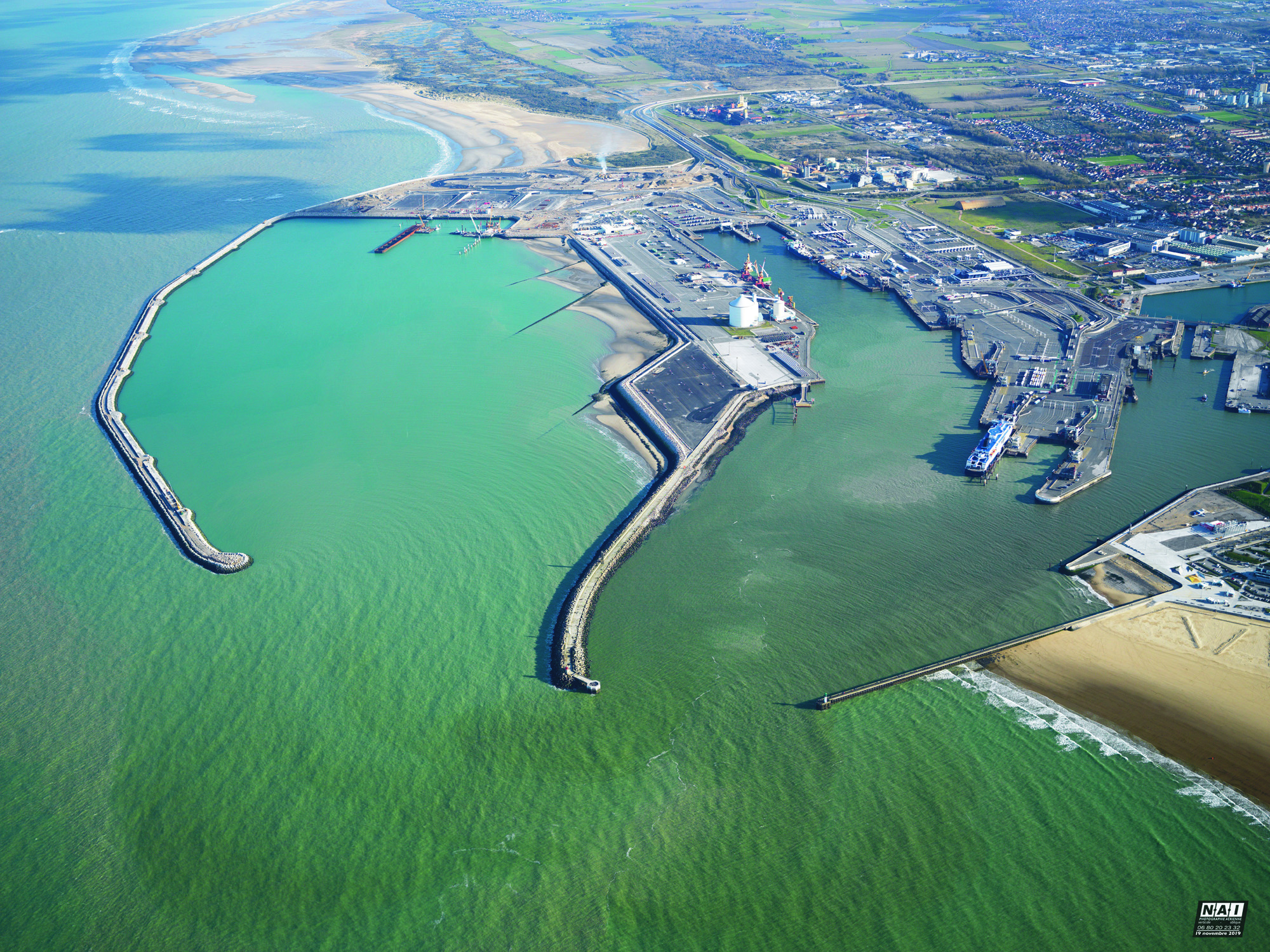
2021
Calais Port 2015 was conceived as of 2003 in response to a twofold challenge in the future: to be capable of berthing the next generation of ferries and ro-ro ships, and cope with the increase in traffic forecast on the 2020/2025 horizon by installing state-of-the-art port facilities on land reclaimed from the sea.
Calais Port 2015 is backed by the Nord Pas-de-Calais-Picardie Region, owner of the Port of Calais, which on 19 December 2014, by a vote of the plenary meeting, gave its approval for launching the Calais Port 2015 project.
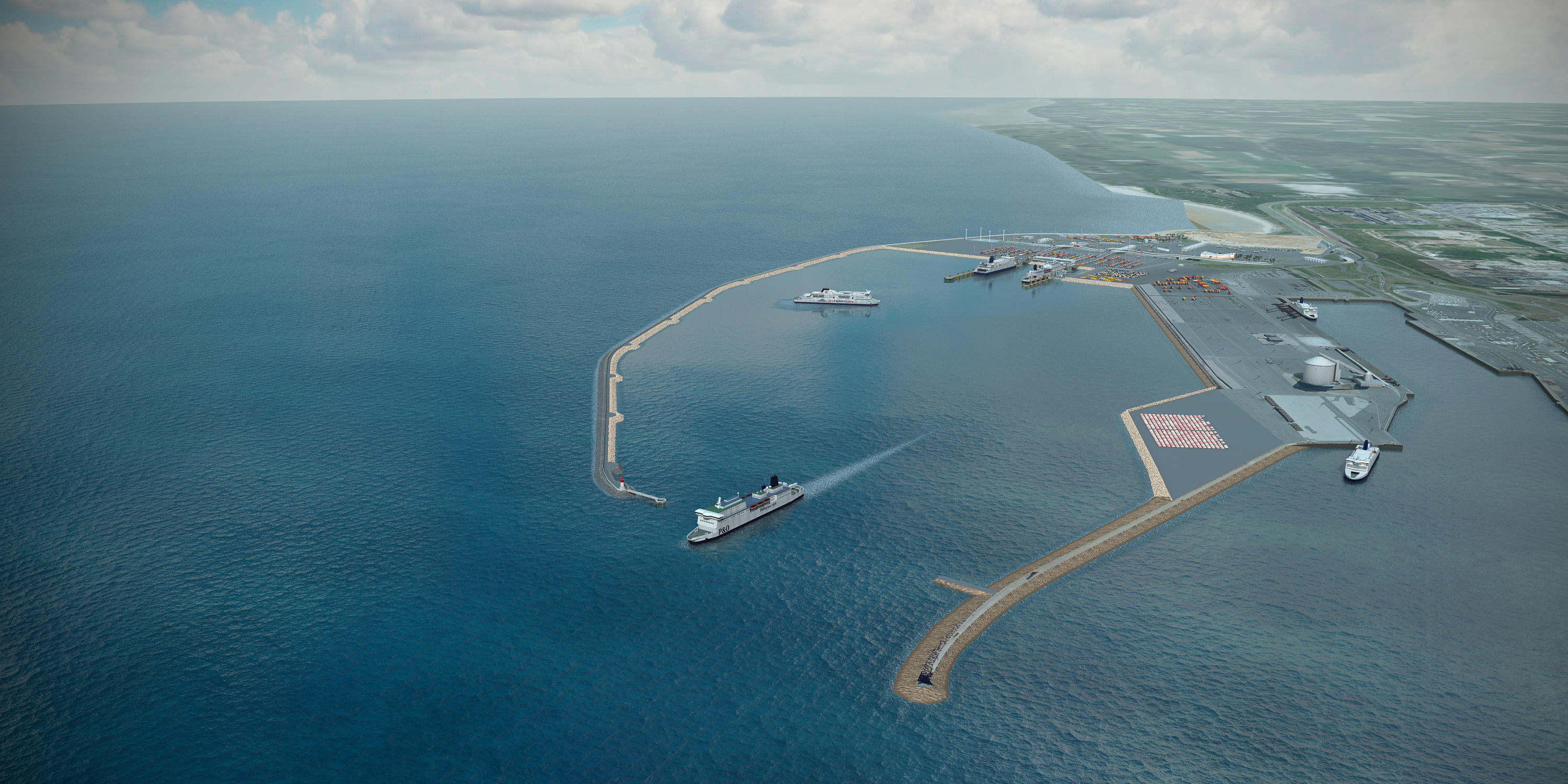
Modernising and extending the port og Calais
Calais Port 2015 is a response to new needs:
- 40% growth in cross-channel traffic by 2030
- An increase in the size of ferries (up to 240 m, versus 213 m at present)
- The development of modal transfer (rail routing and unaccompanied ro-ro ship transport)
- New international environmental standards.
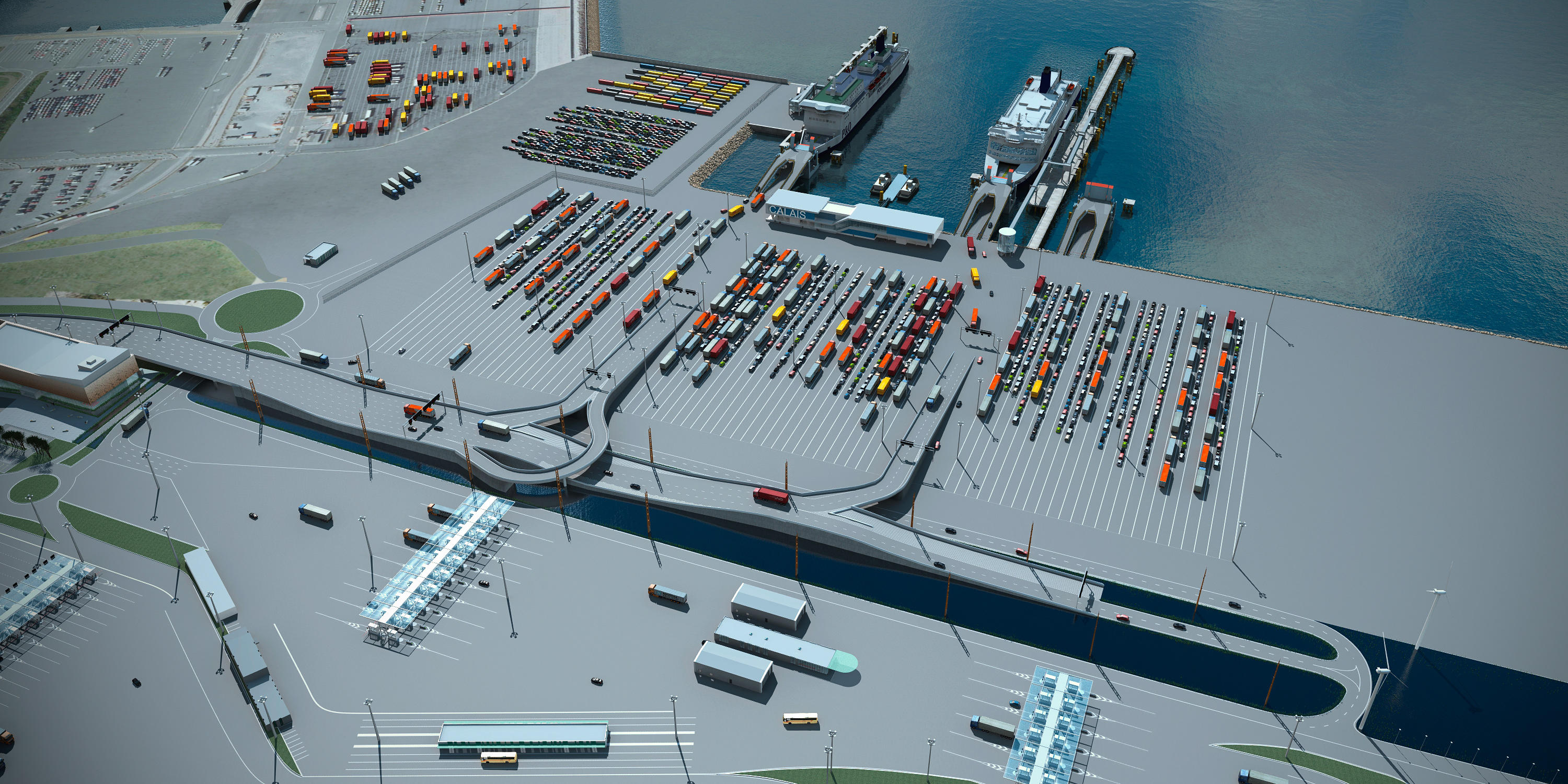
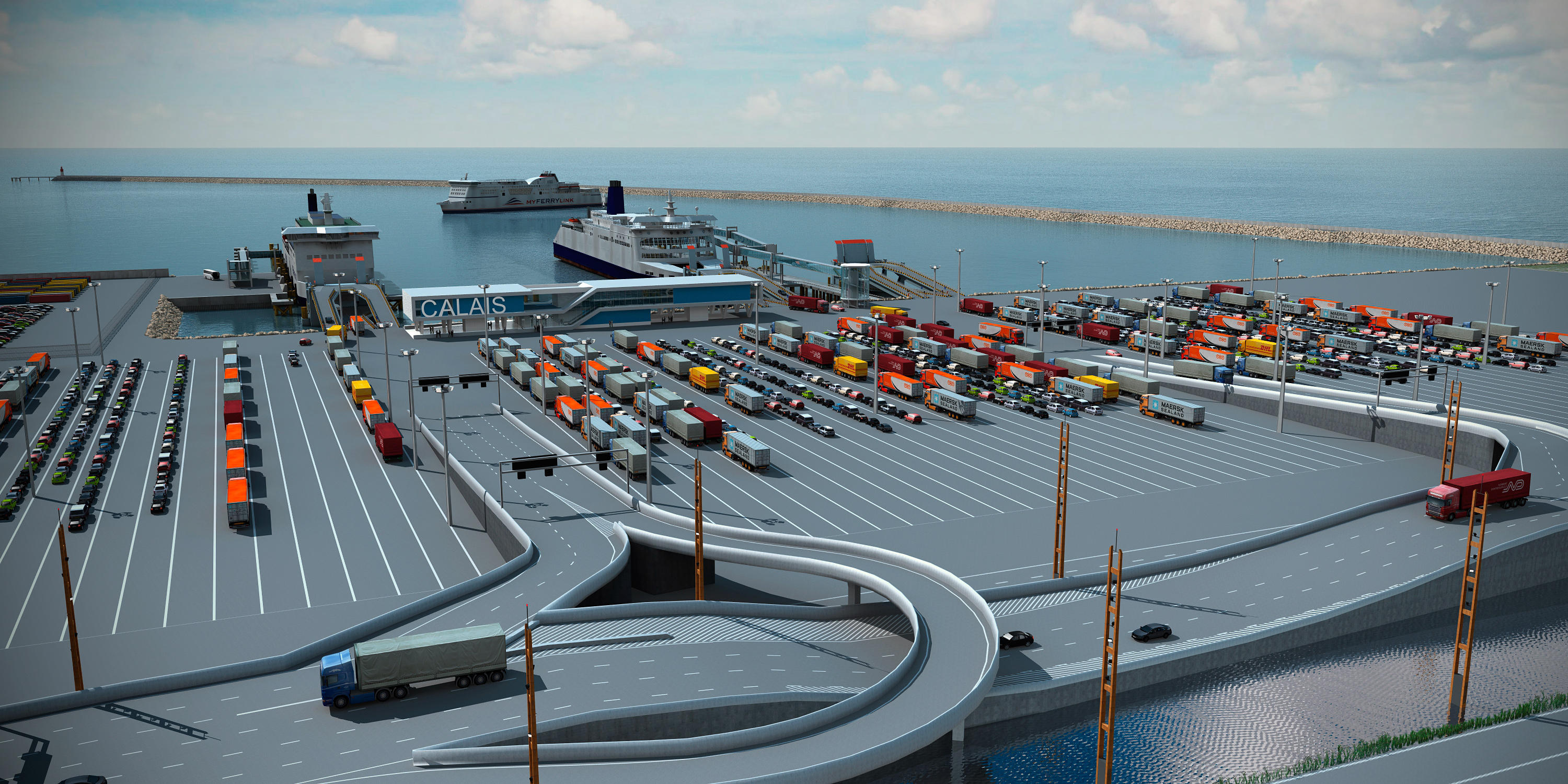
Planned to last six years, the works will involve:
- The creation of a protective dyke 3 km long and a counter-jetty
- The creation of a port basin of about 90 ha (eventually 110 ha)
The construction of new quayage which will provide the space required for the efficient integration of intermodal rail-road-sea infrastructure (Rail and Sea Motorways).
The construction of three ferry berths and lengthening of a Roll-on/Roll-off loading berth
The establishment of a new traffic scheme
The construction of areas and buildings for inspections
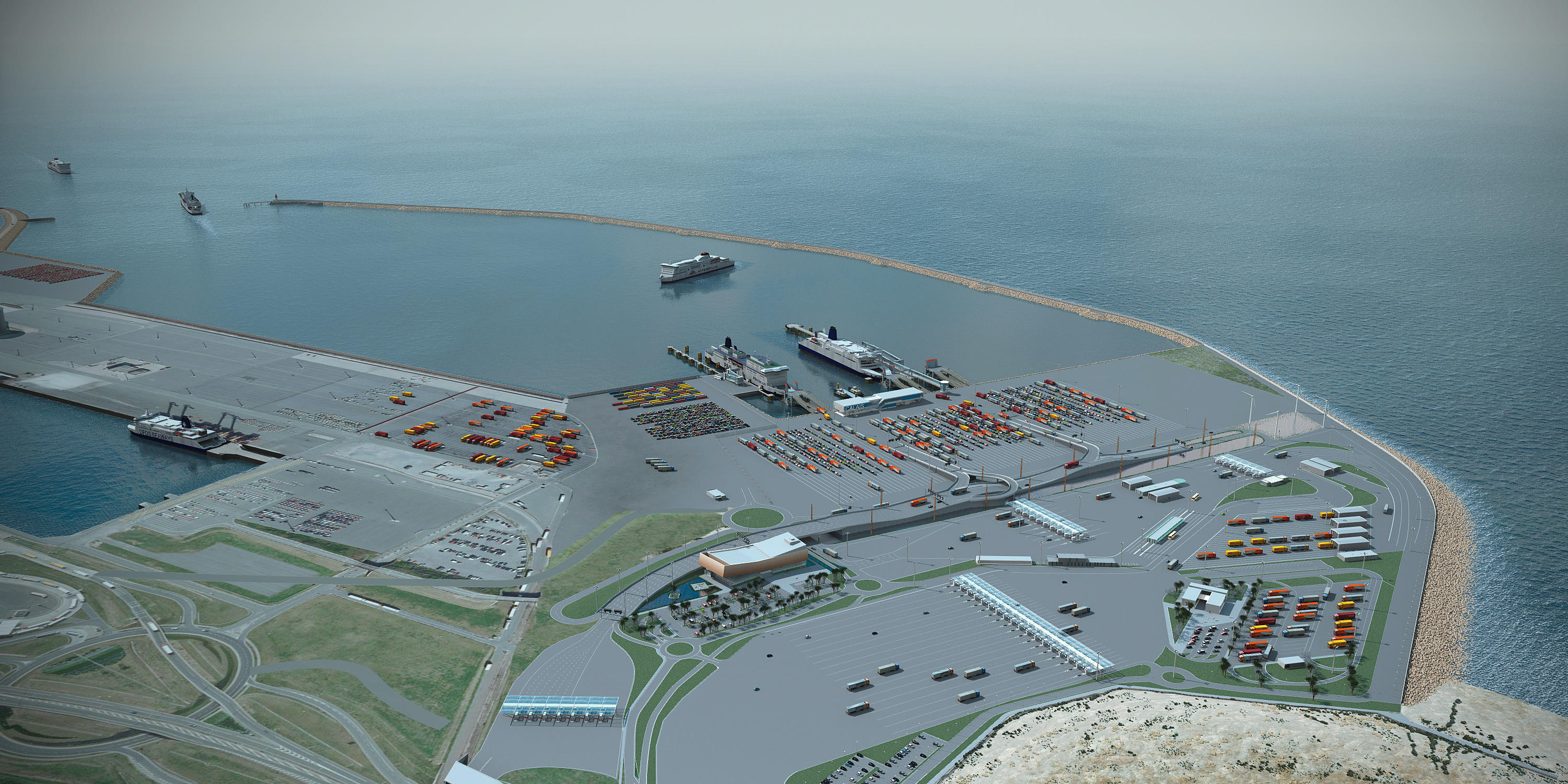
A strategic link in the trans-european transport network (TEN-T)
The Calais-Dover sea link, which is the shortest and most heavily trafficked sea route linking continental Europe to the British Isles, is an essential trade link in Europe.
Calais Port 2015 comes directly within the framework of the enhancement of this route and will enable the Port of Calais to consolidate its strategic role in the TEN-T.
The ports of Calais and Dover are interdependent, and are together facing the challenges due to traffic growth and the regular increase in ferry size on the Calais/Dover route via the Calais Port 2015 and Dover Western Docks Revival projects.
| COST AND FINANCING |
|---|
A TOTAL COST OF €862.5 MILLION, OF WHICH €662.3 MILLION FOR WORKS
|
| SCHEDULING |
|---|
|
Find more about Calais Port 2015







